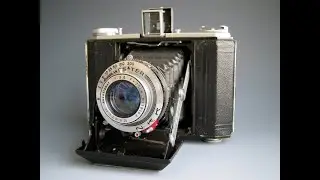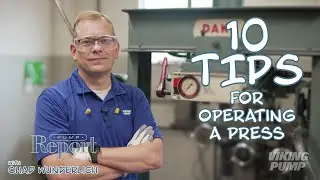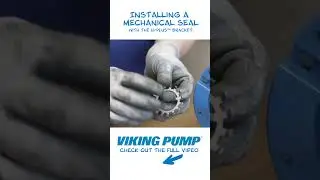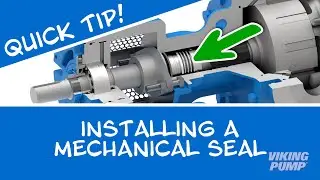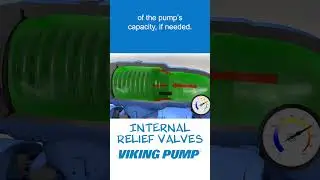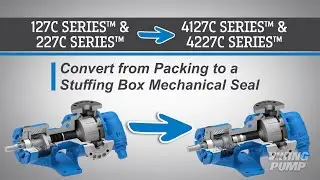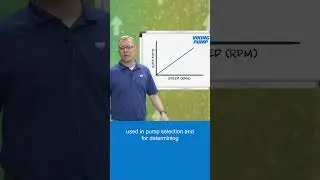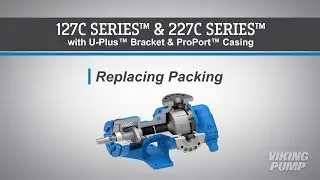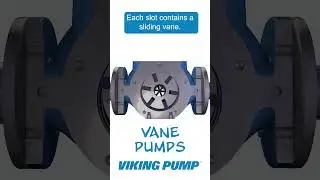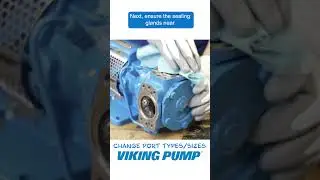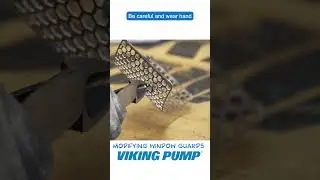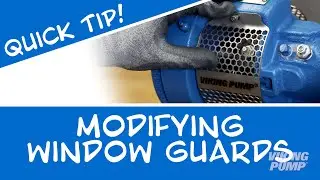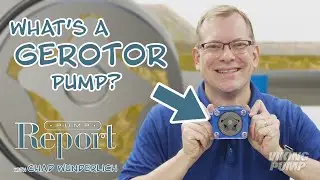10 Tips for operating a manual or hydraulic press
Have questions? We'd love to chat! Send us a message here: https://www.vikingpump.com/yt
In this Pump Report, Chad covers 10 tips for operating a manual or hydraulic press - with a focus on how a press is used to service positive displacement pumps. To learn more or to view other Pump Reports, please visit our website at Viking Pump.com.
#VikingPump #hydraulicpress #hydraulic #press
▬ More Videos ▬▬▬▬▬▬▬▬▬▬▬▬
► All Viking Pump Videos: / vikingpumpinc
► Subscribe to Viking Pump Channel: https://bit.ly/2KJGmJT
▬ Social Media ▬▬▬▬▬▬▬▬▬▬▬▬▬▬▬
► Facebook: / vikingpump
► LinkedIn: / viking-pump
► Website: http://www.vikingpump.com
Some pump part assemblies consist of 2 or more parts, held together with an interference fit.
Like toy blocks, these parts must be pressed together but require no fasteners or adhesives to hold their fit. Common examples for Viking Pump include idler and bushing assemblies in gear pumps or shaft and bearing assemblies in circumferential piston pumps. And the most common method of joining parts like this is to use the press.
Presses come in a variety of types and sizes - so our first tip is to select the right press for the task at hand.
The smaller option is usually a manual press, commonly called an arbor press. These feature a long lever to give the operator a mechanical advantage to apply the press force. These are typically rated for around 3-5 tons of force and is adequate for smaller work like pressing in lip seals or for smaller pumps.
Larger press work typically requires a larger hydraulic press. These utilize a hydraulically actuated ram, significantly increasing the force applied with sizes ranging from 20-100 tons. Hydraulic presses are required for larger assemblies as they can accommodate larger parts and apply a greater force.
Before we go much further let's talk about safety. Before getting started, make sure to review all the safety information for your press and don the appropriate PPE including safety glasses, gloves, and safety shoes or boots.
Of course making sure parts are evenly loaded and going in straight is important. There are accessory kits online...
but cut sections of bar stock, blocks, or metal plate can come in handy to interface between the ram and the pressed part.
One thing to note is that not all interference fits are created with a press fit. Some require a heat shrink. High temperature carbon graphite bushings are a great example of this. These bushings must hold their fit even at high temperatures.
With a normal press fit, the metal part expands at a faster rate than the carbon graphite…which risks the bushing slipping in the bore at high temperature. By heating the part first to open the bore, and then pressing in a slightly larger OD carbon graphite bushing we ensure that the fit is maintained over the full range of temperatures the pump may experience.
And if heating is required or being used just to help make the press work easier, make sure to heat the part evenly to increase the diameter of that bore. Industrial ovens are recommended. Open flame torches heat too unevenly and are not recommended for this work.
When pressing, here are a few things to keep in mind.
The first is lubrication. Lubrication helps to insure the part presses into the bore smoothly. Common lubricants include fuel oil, lube oil, vegetable oil, and grease, but which to use will depend on the application you’re putting the pump into.
Next, ensure that the part is straight. Using the right accessories and the aide of lubricant will help, but make sure the part is perpendicular to the surface. Starting crooked risks damaging either the pressed part or the bore.
Next, when pressing bearings, press on the race that has the interference fit. TRA® gear box bearings are the best example here for Viking pumps.
The inner races are press fit to the shaft and should be pressed with an accessory that presses directly on this race. Pressing on the outer race puts force on the rolling elements of the bearing and may damage the race or the rollers.
The same would be true for all ball bearings. It's good advice not just for Viking pumps but also for gearboxes, motors, and other rotating equipment with press fit bearings.
And remember, once you start don't stop. Brittle materials, like carbon graphite, may fracture if not pressed in one, smooth motion. Avoid starts and stops which may damage the pressed part.
And finally, inspect your work. Make sure there are no cracks or damage and that the part is pressed to the correct depth.
Having access to and the skills necessary to operate a manual or hydraulic press is critical for performing repairs on Viking pumps. Luckily, Viking Pump distributors have the tools necessary to repair, rebuild and otherwise maintain different pumps.

